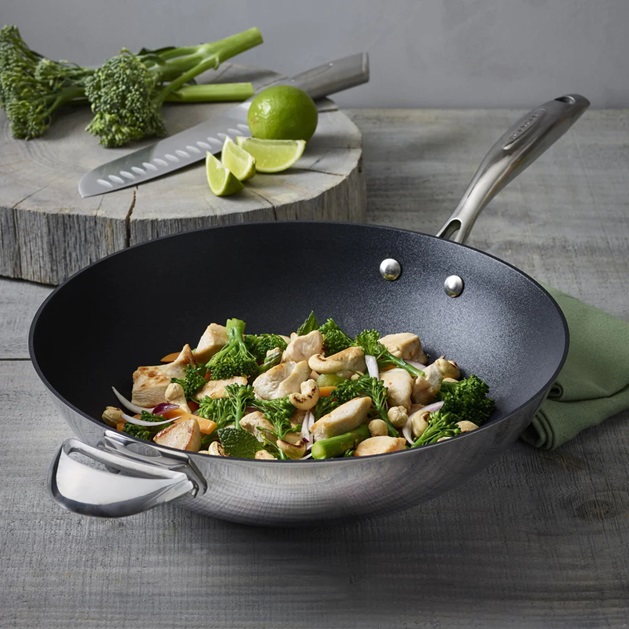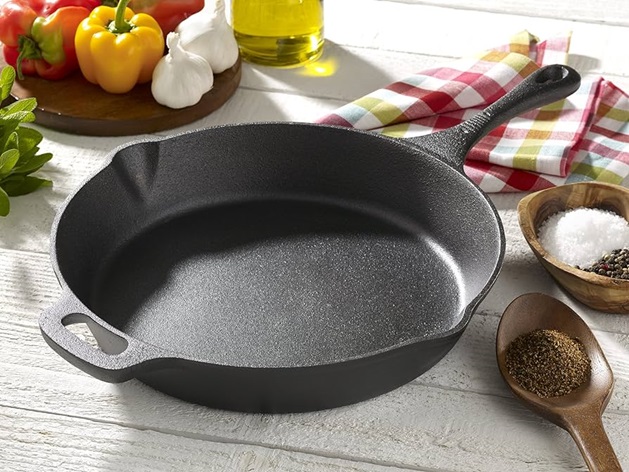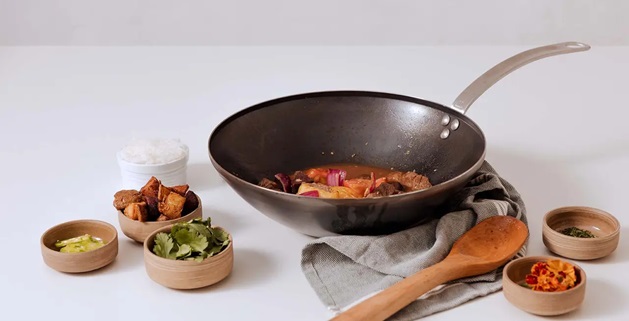The versatile and appealing wok is like the charming frontman of your culinary band. Turn the heat on high and you have a versatile cooking utensil that effortlessly stir-fries veggies and meat that only need a dash of shoyu sauce to reach perfection. A good one will last you a long time if you choose well and maintain it properly. So, here are some crucial things to consider when purchasing that will elevate your cooking experience.
Which Material Is Best for a Wok?
Depending on what you’re planning to cook and how often you’ll use it, the material of your wok can make a big difference in its performance. Oftentimes, we’re so focused on the ingredients and seasonings we use that we overlook the impact of the cooking utensils themselves.
Stainless Steel Woks

One fantastic choice for non-toxic and sturdy cookware for frying, sautéing or boiling is a durable and versatile stainless steel wok. This material is a cost-effective solution for almost any kind of food preparation. It’s resistant to corrosion from many oxidizing acids, so it’s great for steaming. Depending on your cooking style, you can use a bamboo steamer, or a shallow rack and place it at the bottom of the wok to hold your heat-resistant plate. Since it’s non-reactive, you can use it to make vinegary or acidic dishes with wine. It holds heat effectively and cooks food evenly, making it ideal for small-batch baking.
Moreover, steel woks require less maintenance and cleaning, which makes them particularly useful for inexperienced cooks like first-time college students living away from home. After using, just wash with hot, soapy water or scrub down with a dishwashing wire to get rid of any accumulated oil layers. After you finish washing your steel wok, you don’t need to heat it over a flame and coat it with oil, which is typically the practice for cast iron models. Simply wipe it down and leave it to dry.
One of the most popular choices for steel cookware is a three-ply construction that layers stainless steel, aluminium, and stainless steel again. This type of stainless steel wok takes use of aluminium’s superior heat conductivity and provides a more uniform cooking surface. It also seals in the metal, so you don’t have to worry about it leaching into your food. This type of cookware is simple to clean, durable, dishwasher safe, and has a more sleek and seamless appearance compared to other low-quality woks.
My favourite thing about stainless steel woks is their timeless style. They’re more than just cooking tools – they’re like statement pieces for your kitchen. Durable, versatile, heat-mastering, easy to clean, and oh-so-stylish. If you haven’t joined the fan club yet, what are you waiting for? Your taste buds and your kitchen will thank you.
Carbon Steel
Woks made of carbon steel are another popular choice, especially in Chinese restaurants. They often come with two metal handles and they’re much lighter than cast iron pans. With age, they develop a practical non-stick surface and a shiny patina. These pans are easy to clean, with only a sponge and dish soap you can cut through the thick oil residue.
To prevent rusting, you should warm it up and lightly coat it with vegetable oil after washing. These pans are typically composed of 14-gauge steel, which has a thickness of 1.6 mm, making them robust but not overly heavy. They come in reasonable prices, they’re robust, and heat up evenly.
Cast Iron

Chinese cast iron options date back to the old times. They’re usually thicker and require more time to heat up. Even though they hold heat rather well, adding a lot of liquid or veggies might cause them to cool down. It takes some time for the pan to reheat at that point, which is bad news for quick stir-fries. Before you use a cast iron pan, you need to season it first. Carefully clean it with dish soap and rinse it, then coat it with vegetable oil and reheat it.
Teflon-Coated
Teflon-coated non-stick models are widely available, and you can buy them in most large stores, so there’s a wide variety of brands and sizes. The non-stick surface is much easier to clean and doesn’t require any seasoning with oil. However, one major drawback of these pans is that they’re not suitable for cooking at high temperatures. 260°C is stretching it, even with the top non-stick manufacturers.
Additional Considerations

Size
Most Chinese woks are 33-35cm in diameter, which makes them ideal for a range top. To prevent the cooking odours from seeping into the main living space, most contemporary Chinese kitchens have range tops, and a door leading to the kitchen. Around the world, wok sizes range from 25-50cm. When looking for the perfect size, think about the amount of food you usually cook and the number of people you cook for. If you’re cooking a meal for two to five people, a 35cm diameter is a good choice. If you’re usually cooking a small amount of food, I recommend getting a smaller pan.
Handles
Woks are big and heavy, and they usually sit still over a flame for an extended period. This is why most designs traditionally have two little metal grips at opposing ends that help you easily manoeuvre the utensil. These days, people often use bigger pans with two handles for steaming cooking greater quantities of food. Restaurants usually use single-handled woks as stir-fry stations.


